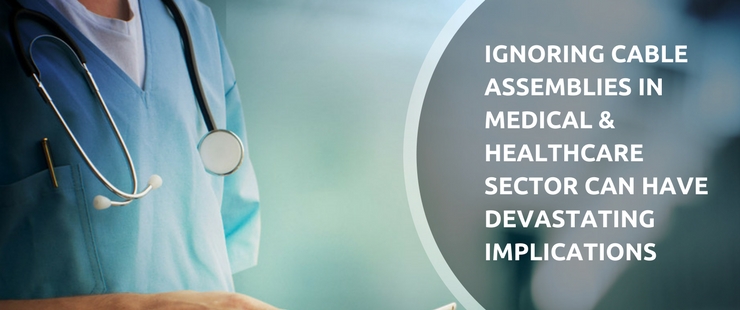Cable Assemblies are widely used in precision medical device applications in hospitals, clinics, labs, and medical facilities. They connect medical equipment that is widely used for patient monitoring and treatment. Keeping in view the critical aspects associated with the healthcare sector, the failure of medical devices due to wire harness and cable assembly manufacturing defect can never be on the list of options.
Regulatory Standards for Cable Assemblies in Medical Devices
Medical facilities are held to high regulatory standards since they are more often than not subjected to high temperatures, tension, and abrasion. When cable assemblies and wire harnesses are manufactured, a primary factor is to have increased wear and tear. Based on the assembly specifications that include cable type, conductor range, plating, shielding, insulation, and material used, cable and wire harnesses need to withstand high temperatures, tensions, and chemical sterilization procedures to maintain high regulatory standards.
Uses of Cable Assemblies and Wire Harness in Medical Sector
In the medical and healthcare sector, cable assemblies are widely used in medical devices ranging from patient monitoring systems, ultrasound equipment, therapeutic devices, electric catheters, and fetal monitors, to lab analysis equipment, heart rate monitors, defibrillators, and ECG machines. Let us take the example of a cardio meter that is hooked up to a heart patient. The patient will be healthy and alive when the patient’s heart rate is within a certain range. Cable assemblies play a significant role in monitoring this range. Moreover, they are connected to the computer device that collects data and reports the patient’s heart beats from which doctors keep a track of the patient’s progress.
Sterilization Techniques of Cable Assemblies for Medical Devices
To eliminate biological agents such as bacteria, viruses, etc. sterilization techniques are employed. The manufacturers of medical cable assemblies can use a few techniques to ensure complete sterilization since this requirement is critical. Some of the important sterilization techniques for medical devices are discussed as follows:
Steam Heat Sterilization
Steam heat is like a pressure cooker in which steam under pressure acts as the sterilization agent. The heat reaches temperatures as high as 134 degrees Celsius and lasts up to 20 minutes depending upon the load necessary.
Dry Heat Sterilization
Dry heat is like a conventional oven and the foremost choice among sterilization techniques. Giant ovens are employed in which heat up to 160 to 170 degrees Celsius for durations of about 1 to 2 hours is subjected to the cable assemblies.
Radiation Sterilization
This method employs either gamma rays or an electron beam to sterilize the application. This sterilization setup is similar to a microwave and it sterilizes all the components of the device at the same time.
Ethylene Oxide Sterilization
This is a chemical sterilization process in which Ethylene Oxide commonly called EO is employed. If the application cannot be exposed to high temperatures and moisture, this method of sterilization comes out to be a better one. It can also penetrate the packaging and products to kill microorganisms.
Each of these sterilization techniques ensures complete sterilization. The choice of any one of them depends upon the specific limitations and requirements of your medical device application.
Conclusion
Medical and healthcare is one such sector where there is no option for failure as it can threaten someone’s life. Since medical devices widely use cable assemblies, it necessitates the use of best-in-class cables and wires in the equipment. Manufacturing cable assemblies and wire harnesses must, therefore, be done in an infallible manner with the help of professional electronic manufacturing service providers.



